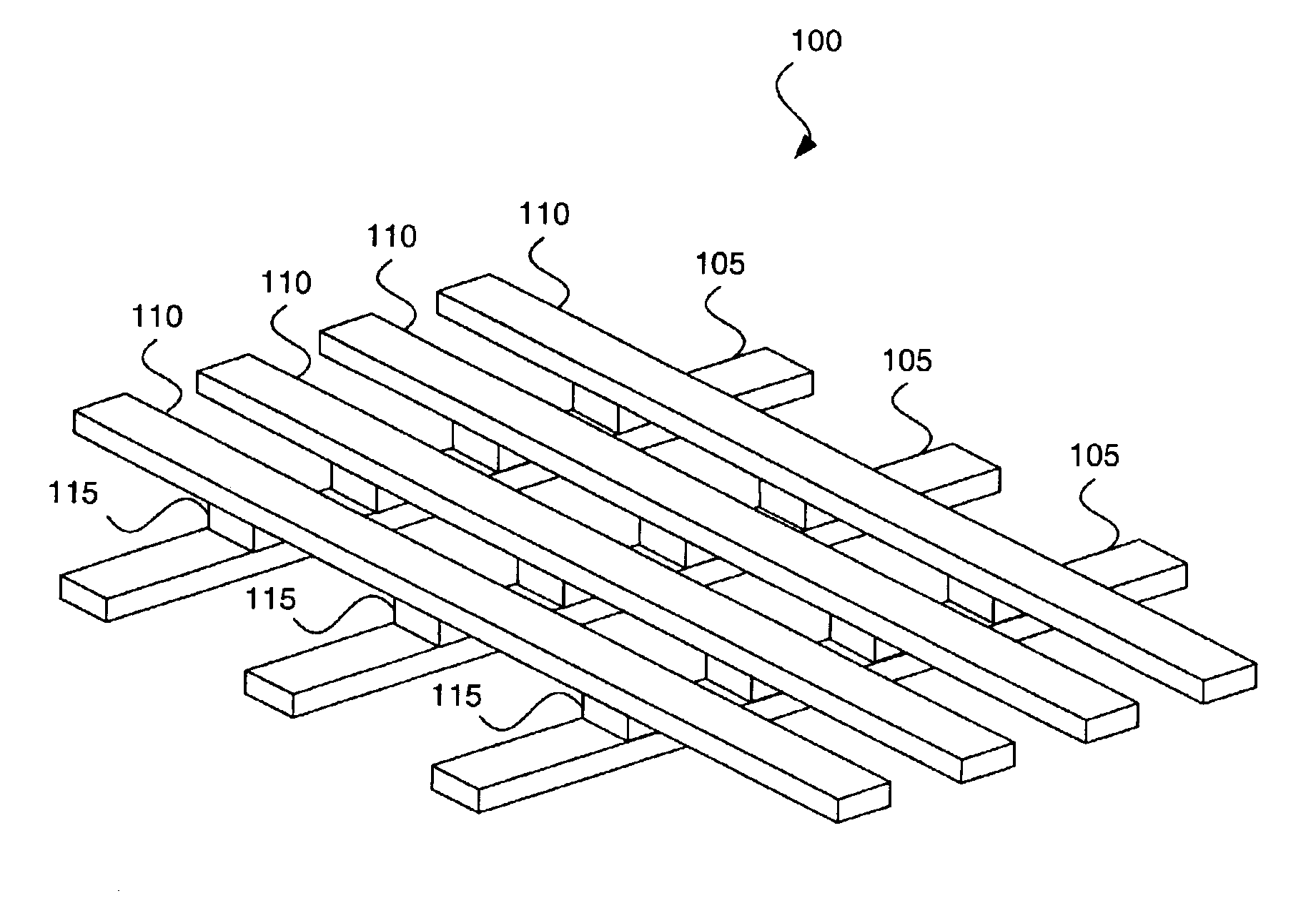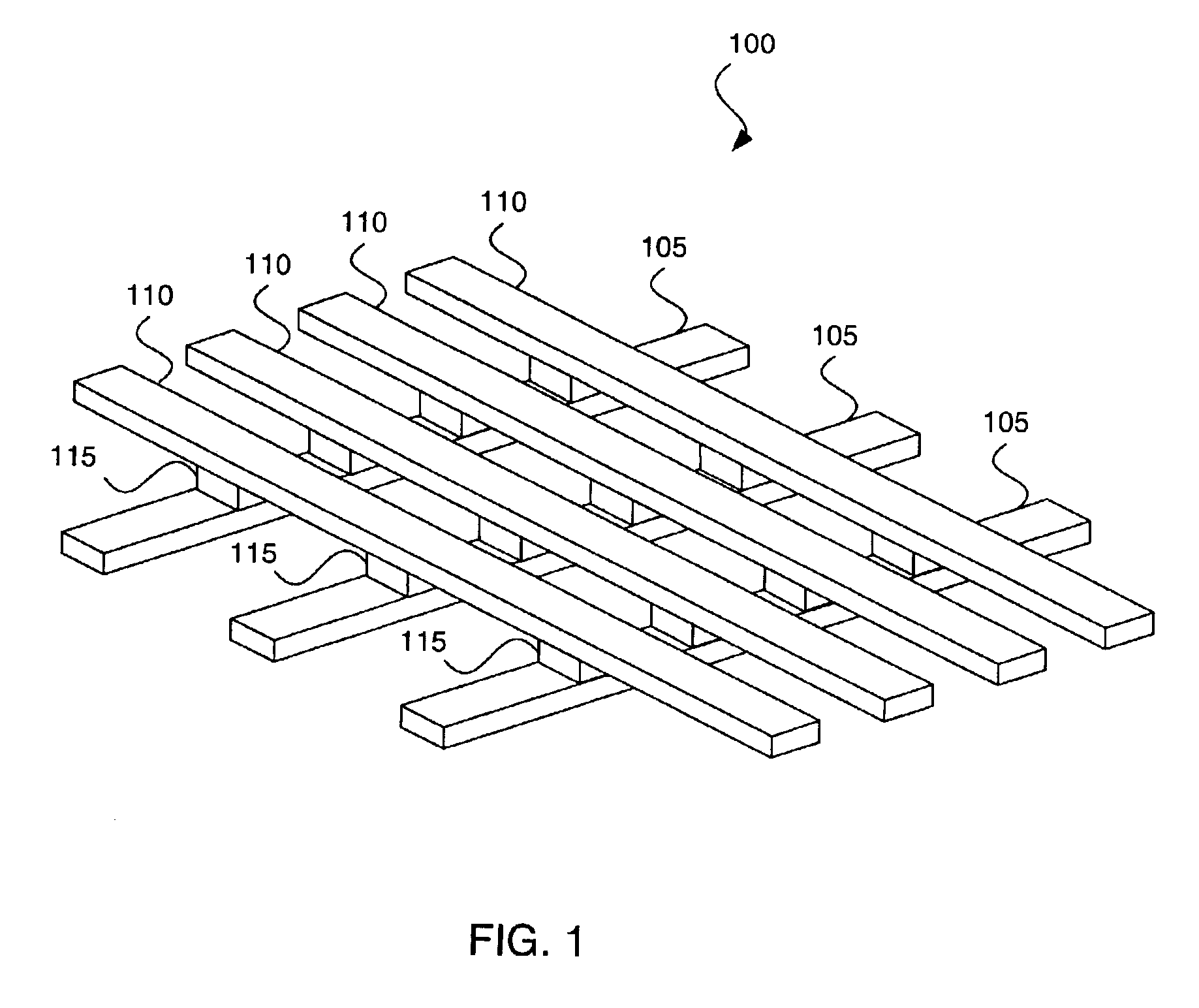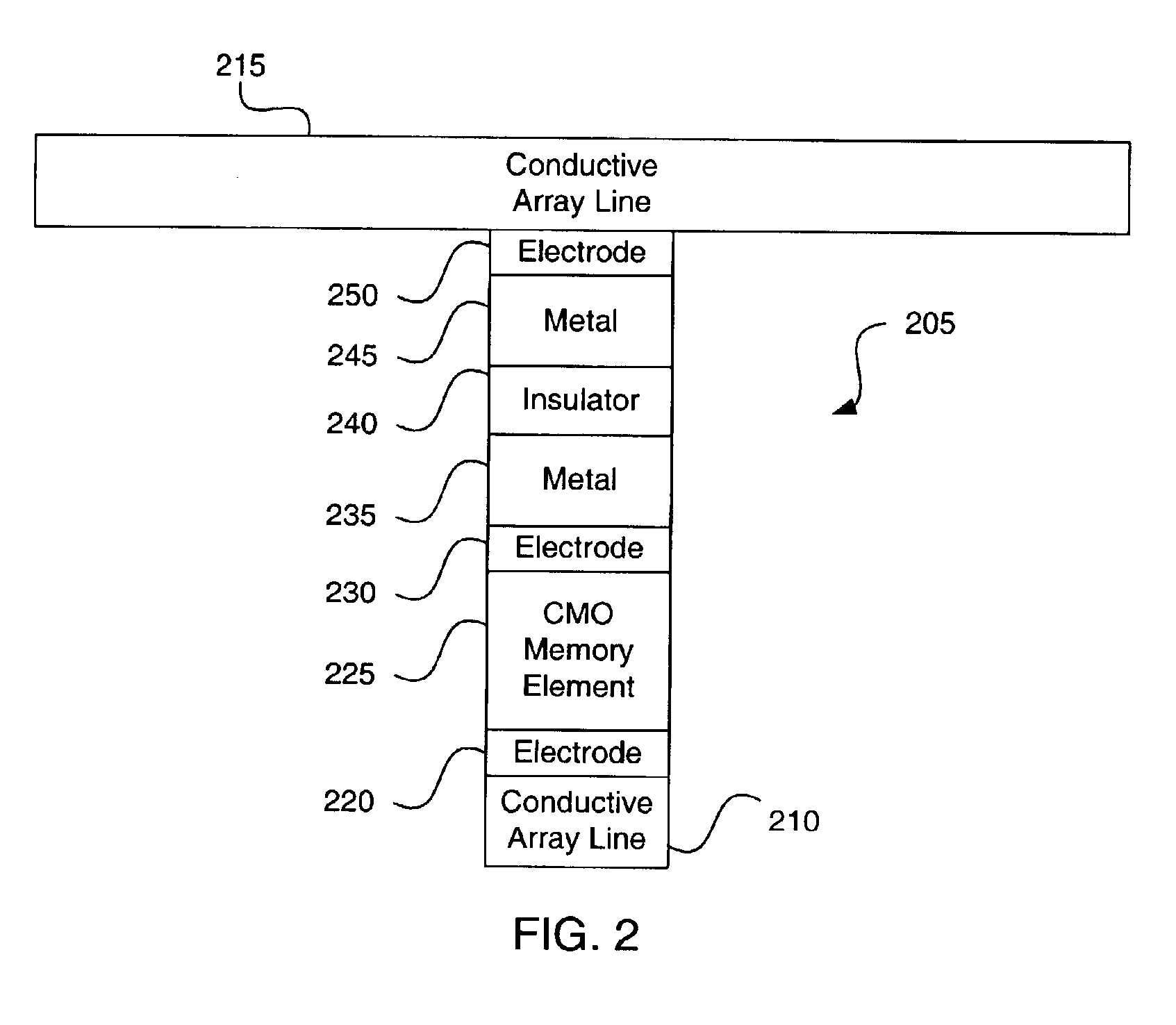Providing a reference voltage to a cross point memory array
a cross-point memory and reference voltage technology, applied in the field of memory, can solve the problems of not solving many non-trivial problems and unsatisfactory layout of such devices
- Summary
- Abstract
- Description
- Claims
- Application Information
AI Technical Summary
Problems solved by technology
Method used
Image
Examples
Embodiment Construction
[0033]FIG. 1 depicts an exemplary cross point array 100. A bottom layer of x-direction conductive array lines 105 and a top layer of y-direction conductive array lines 110 sandwiches a plurality of memory plugs 115. The conductive array lines 105 and 110 are arranged in the cross point array 100 so that each individual memory plug is capable of being uniquely identified and, therefore, uniquely selected by a single x-direction conductive array line and a single y-direction conductive array line.
[0034]Conductive array lines 105 and 110 can be constructed of any conductive material, such as aluminum, copper, tungsten or certain ceramics. Ideally, the material will withstand a high-temperature fabrication process, have a low inherent resistance, and have a low cost. Often, however, compromises will have to be made.
[0035]For example, if the memory element is a CMO, very high temperatures might be required to form a polycrystalline or a single crystalline structure. Depending upon the fa...
PUM
 Login to View More
Login to View More Abstract
Description
Claims
Application Information
 Login to View More
Login to View More - R&D
- Intellectual Property
- Life Sciences
- Materials
- Tech Scout
- Unparalleled Data Quality
- Higher Quality Content
- 60% Fewer Hallucinations
Browse by: Latest US Patents, China's latest patents, Technical Efficacy Thesaurus, Application Domain, Technology Topic, Popular Technical Reports.
© 2025 PatSnap. All rights reserved.Legal|Privacy policy|Modern Slavery Act Transparency Statement|Sitemap|About US| Contact US: help@patsnap.com



